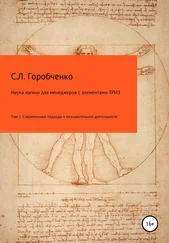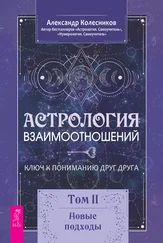Библиография
Allinson R., Chang-Tzu for Spiritual Transformation, New York, 1989.
Anthropological Approaches to the Old Testament, ed. B. Lang, Philadelphia, 1985.
Argummtefur Gott. Gott-Denker von derAntike bis zur Gegenwart, Hrsg. K. Weger & M. Bossong, Freiburg etc., 1987.
Bernard C., LeDieu des mystiques. Les voies de l'intmorite, Paris, 1994.
Carson D., A Call to Spiritual Reformation. Priorities from Paul and His Prayers, Grand Rapids (Michigan), 1994.
Cascant J., Estnictura de la persona humana en el origen. Estudio exegetico de los relates de la creation del hombre, Pamplona, 1985.
Conversion. Perspectives on Personal and Social Transformations, ed. W. Conn, New York, 1978. Curtis E., Man as the Image of God in Genesis in the Light ofAncient Near Eastern Parallels, Pennsylvania, 1984.
De Mielesi U., La transformazione d’amore in San Giovanni della Croce, Milano, 1981. DeisslerA., Wer bist du, Mensch? Die Antwort der Bibel, Freiburg etc., 1985.
Dieu et I’Etre. Exegeses d’Exode 3, 14 et de Coran 20, 11–24, ed. P. Vignaux, Parijs, 1978. Ferguson H., Religious Transformation in Western Society. The End of Happiness, New York, 1992. Fichtner J., Man the Image of God. A Christian Anthropology, New York, 1978.
Frohlich М., Mystical Transformation, Intersubjectivity, and Foundations. A Study of Teresa of Avila’s 'Interior Castle', Ann Arbor (Michigan), 1991.
God is uit zijn begrip gegroeid, a Speling 38, 1986, nr 3.
Harper K., Seven Hindu Goddesses of Spiritual Transformation. The Iconography of the Saptamatri- kas, Lewiston (New York), 1989.
Images of God, в The Way 26, 1986, no 4.
Janzen W., Still in the Image. Essays in Biblical Theology and Anthropology, Newton, 1982. Johnston W., TheMirrorMind. Spirituality and Transformation, San Francisco — London, 1981.
Каам A. VAN, The Mystery of Transforming Love, Denville, 1982.
Luevano A., Endless Transforming Love. An Interpretation of the Mystical Doctrine of Saint John of the Cross According to the Soul’s Affective Relation and Dynamic Structures, Roma, 1990.
Mason Т., The EHvine Name as a Means to Mystical Union in the Spiritual Traditions of Judaism and Christianity, Berkeley (California), 1990.
Der Mensch als Bild Gottes, Hrsg. L. Scheffczyk, Darmstadt, 1969.
Metzner R., Opening to Inner Light. The Transformation of Human Consciousness, London, 1987.
Moseley R., Becoming a Self before God. Critical Transformations, Nashville, 1991.
Ockinga B., Die Gottebenbildlichkeit im alten Agypten und im AUen Testament, Wiesbaden, 1984.
POLLANO G., Dio presente e trasformante. Saggio di teologia spirituale, Torino, 1993.
Reformatio ecclesiae, ed. R. Baumer, Paderborn etc., 1980.
Schneiders S., Women and the Word. The Gender of God in the New Testament and the Spirituality of Women, New York, 1986.
Simpson W., From, Image to Likeness. The Christian Journey into God, New York, 1997.
Sustar Т., Transforming Faith. Reproducing the Christlife, Cleveland (Tennessee), 1992.
Transformations of Consciousness. Conventional and Contemplative Perspectives on Development, eds. K. Wilbur et al., Boston, 1986.
Ullman C., The Transformed Self. The Psychology of Religious Conversion, New York, 1989.
Vale C., Mystical Consciousness / Transformation. An Examination of the Christian Tradition from a Teilhardian Perspective, New York, 1990.
Vaughan-Lee L., Sufism. The Transformation of the Heart, Inverness (California), 1995.
Waaijman K., Betekenis van de naam Jahwe, Kampen, 1984.
Was ist der Mensch..? Beitrage zur Anthropologie des Alten Testaments, Hrsg. F. Criisemann et al., Miinchen, 1992.
WASCHKE E., Untersuchungen zum Menschenbild der Urgeschichte, Berlin, 1984.
WiETHAUS U., Ecstatic Transformation. Transpersonal Psychology in the Work ofMechthild of Magdeburg, Syracuse (New York), 1996.
Wolff H., Anthropologie des Alien Testament, Miinchen, 1973.
Глава 4 Распознавание: набросок метода
Введение
Критические рассуждения, касающиеся процесса развития божественно-чело- веческих отношений, встречаются во всех школах духовности. Как происходит процесс духовного преображения? Какое развитие заводит в тупик? Какое открывает новые перспективы? Какова связь между целью и средствами? Как Бог и человек воздействуют друг на друга? В христианской традиции эти критические размышления называются «различением» и «распознаванием» (диакрисис).
Различение двух путей Осознание различий между развитием, приводящим в тупик, и развитием, открывающим новые перспективы, — это первый этап критических размышлений.
Два пути в Писании
Два пути в Предании
Различение разных путей
Распознавание значения Бога Обнаружение, сравнение и оценка глубоких смысловых уровней в жизни, в Священном Писании и в душе — это второй аспект различения-распознавания.
Интерпретация в свете Писания
Понимание жизни с точки зрения Бога
Расхождения в значении процесса понимания
Середина в процессе распознавания Установление критического центра, где происходит обмен опытом и его проверка в рамках средней величины между крайними точками, — это третий момент процесса распознавания.
Подготовка к духовности премудрости
Формирующий центр
Разграничение различных позиций
Распознавание пути к Божьему предначертанию Осознание различия между реальным поведением людей и их процветанием в Боге и в процессе понимания пути, который может устранить это различие, — четвертый аспект распознавания.
«Быть испытываемым» в Писании
Возрастание в совершенстве
Распознавание предназначения человека Библиография
Читать дальше












